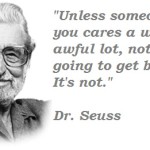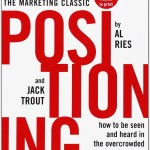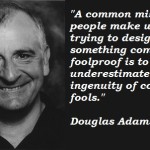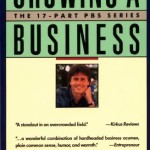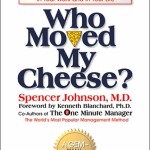“The curious paradox is that when I accept myself just as I am, then I can change.”
The late Carl Rogers, founder of the humanistic psychology movement, revolutionized psychotherapy with his concept of “client-centered therapy.” His influence has spanned decades, but that influence has become so much a part of mainstream psychology that the ingenious nature of his work has almost been forgotten. A new introduction by Peter Kramer sheds light on the significance of Dr. Rogers’s work today. New discoveries in the field of psychopharmacology, especially that of the antidepressant Prozac, have spawned a quick-fix drug revolution that has obscured the psychotherapeutic relationship. As the pendulum slowly swings back toward an appreciation of the therapeutic encounter, Dr. Rogers’s “client-centered therapy” becomes particularly timely and important.
This study of personal growth and creativity by one of America’s most distinguished psychologists is a classic. [From: Barnesandnoble.com]
“People are just as wonderful as sunsets if you let them be. When I look at a sunset, I don’t find myself saying, “Soften the orange a bit on the right hand corner.” I don’t try to control a sunset. I watch with awe as it unfolds.”
Have you ever felt ‘healed’ by a long conversation with someone? Has a particular relationship made you feel normal or good about yourself again? Chances are that these interactions happened in an environment that was trusting, open, frank, and in which you were given full attention and really listened to without judgment.
Carl Rogers took these features of a good relationship and applied them to his work as a psychologist and counselor. The result was a revolutionary way of dealing with a person’s issues that overturned the traditional psychologist-patient model, and which had broader implications for successful human interaction.
Rogers came to his profession with the assumption that he would be the superior practitioner ‘solving’ the problems of whoever came to see him. But he began to realize that this model was rarely effective, and that progress depended more on the depth of understanding and openness between the two people sitting in the consulting room. He was strongly influenced by Martin Buber, the existential philosopher, and his notion of ‘confirming the other’. This meant fully affirming the potential of a person, the ability to see what he or she ’has been created to become’.
Such a shift in emphasis towards the possible (as opposed to merely the problematic) made Rogers, along with Abraham Maslow, a major figure in the new ‘humanistic’ psychology, with its notions we take for granted today about personal growth and human potential.
On Becoming A Person is not a single piece of writing but a collection of pieces Rogers wrote over a decade. The book is the accumulation of wisdom of a career in psychotherapy spanning over thirty years, and while not an easy read by today’s pop psychology standards, once you ‘get’ the ideas it can be a very inspiring read.
Letting everyone be themselves
In his training as a psychologist, Rogers naturally absorbed the idea that he controlled the relationship with the client, and that it was his job to analyze and treat the patient as if he or she was an object. But he came to the conclusion that it was more effective to actually let the patient, or client, guide the direction of the process. This was the beginning of his famous client-centered (or person-centered) form of therapy.
Rather than trying to ‘fix’ the client, Rogers felt it was much more important to listen absolutely to what a person was saying, even if it seemed wrong, weak, strange, stupid or bad. This stance allowed that person to be accepting of all their thoughts, and after a number of sessions they would heal themselves. Rogers summed up his philosophy as: “simply to be myself and to let another person be himself”. As this was a time when the study of psychology revolved around the behavior of rats in laboratories, his belief in letting the ‘crazy’ patient set the direction of things was a big challenge to the profession, and many denounced his ideas.
If this was not enough, Rogers also shattered the idea of the calm and collected therapist who objectively listened to the client’s issues. He asserted the right of the therapist to have a personality, to express emotions themselves. If, for instance, in the course of the session he felt hostile or annoyed, he would not pretend to be the pleasant, detached doctor. If he did not have an answer, he would not pretend he did. If the psychologist-client relationship was to rest on truth, he felt, it had to include the moods and feelings of the practitioner.
“The only person who is educated is the one who has learned how to learn and change.”
Identifying with the client
In short, client-centered therapy held that change would only happen through the experience of a relationship, and that it was the therapist’s role to provide an environment in which personal growth might occur. Many people live in a frightening world of their own making; they desperately try to hold everything in place. To allow a person to break through to a more free-flowing life that is closer to attuned to changing reality, Rogers had to first feel what it was like to exist in such a ‘tight, constricted little world’, to really get inside the skin of the client. Most types of so-called understanding, Rogers noted, was someone providing objective understanding from outside. Yet he saw a big difference between someone trying to work out your problem and help with it, and that person actually wanting to feel what it is like to be you; only through the latter, however, could you have a powerful interaction.
At the heart of Roger’s work was the view that life is a flowing process. The fulfilled person, he believed, should come to accept themselves “as a stream of becoming, not a finished product.” The mistake people made was to try to control all aspects of their experience, with the end result being a personality not grounded in reality. Again this was quite a challenging idea at the time Rogers was writing, but every day he had to deal with the results of people who had chosen to limit their reality and button up their emotions.
Becoming a real person
Rogers observed that when people first come in to see a counselor for treatment, they usually gave a reason, such as issues with a wife or a husband, or an employer, or with their own uncontrollable behavior. But invariably, these ‘reasons’ were not the real problem; there was in fact just one problem with all the people he saw: They were desperate to become their real selves, to be allowed to drop the false roles or masks with which they had approached life to date. They were usually very concerned with what others thought of them and what they ought to be doing in given situations. But in therapy, the person is brought back to their immediate experience of life and situations. They cease to be a rigid set of rules about who they must be, and are transformed into a person who can ask and decide easily upon the question “What does this mean to me?”. They become a person, not just a reflection of society.
One aspect of this transformation is that they begin to ‘own’ all aspects of their selves, to allow totally contradictory feelings (one client admitted she both loved and hated her parents on occasion) and yet be OK about it. Rogers’ dictum was ‘the facts are always friendly’ when it comes to sorting one’s emotions and feelings; the real danger is in denying what we feel. As each feeling we are ashamed of comes to the surface, we realize it will not kill us to allow it to exist. Someone who fully owns all their thoughts and emotions will not always be conventional or conforming, but we can rely on them to be a real person – paradoxically, a socialized person. It is the people not in touch with all aspects of themselves that are the potential destroyers of the social fabric.
Rogers loved the writings of Danish philosopher Soren Kierkegaard, who believed that the most common type of despair is to feel you are not being true to yourself. A person should always be asking, “Am I living in a way that expresses who I am?” If through therapy people could begin to say ‘yes’ to this question they would be on the road to an abundant life, in tune with their gut reactions and senses instead of a whole lot of ‘shoulds’.
“What I am is good enough if I would only be it openly.”
Basically positive
Central to Rogers’ therapeutic philosophy was his understanding of human nature. Having been exposed in his earlier years to Freudian ideas about dark impulses which rise up to sabotage the intentions of everyday life, he came around to almost the opposite view: that humans are “basically socialized, forward-moving, rational and realistic”. Hostile emotions are simply “the frustration of more basic impulses for love and security and belonging”. The deeper his clients dug within themselves, Rogers noticed, the more positive were their wishes for life.
Final comments
Rogers’ impact has been felt way beyond his own field of counseling psychology. His emphasis on people needing to see themselves more as a fluid process of creation rather than a fixed entity was part of the climate of ideas that led to the 1960s counter cultural revolution, and it is easy to see his influence on today’s self-help writers. For instance, one of Stephen Covey’s ‘seven habits of highly effective people’, is seek first to understand, a very Rogerian notion that that progress in relationships is never made unless the people within it feel safe to speak their mind and to be heard. And today’s catch cry to ‘live your passion’ can also in part be traced back to Rogers’ focus on living a life that expresses who we truly are.
Rogers felt that psychologists had the most important job in the world, because ultimately it was not the physical sciences that would save us, but better quality interactions between human beings. The climate of openness and transparency he created in his sessions, if replicated within the family, the corporation, in politics, would result in less angst and more constructive outcomes. But the key was a desire to really feel what the other person or party wanted and felt. Such a willingness, although never easy, could transform those involved. [From: Butler-bowdon.com]
“The degree to which I can create relationships, which facilitate the growth of others as separate persons, is a measure of the growth I have achieved in myself.”
About The Author:
Carl Ransom Rogers (January 8, 1902 – February 4, 1987) was an influential American psychologist and among the founders of the humanistic approach (or client-centered approach) to psychology. Rogers is widely considered to be one of the founding fathers of psychotherapy research and was honored for his pioneering research with the Award for Distinguished Scientific Contributions by the American Psychological Association (APA) in 1956.
The person-centered approach, his own unique approach to understanding personality and human relationships, found wide application in various domains such as psychotherapy and counseling (client-centered therapy), education (student-centered learning), organizations, and other group settings. For his professional work he was bestowed the Award for Distinguished Professional Contributions to Psychology by the APA in 1972. In a study by Haggbloom et al. (2002) using six criteria such as citations and recognition, Rogers was found to be the sixth most eminent psychologist of the 20th century and second, among clinicians, only to Sigmund Freud. [From: Wikipedia.com]
“The kind of caring that the client-centered therapist desires to achieve is a gullible caring, in which clients are accepted as they say they are, not with a lurking suspicion in the therapist’s mind that they may, in fact, be otherwise. This attitude is not stupidity on the therapist’s part; it is the kind of attitude that is most likely to lead to trust…”
Now Watch This Video:
Carl Rogers and Gloria – Counselling (1965) Full Session ; TIME 45:40 minutes
If you like this story, CLICK HERE to join the tribe of success-minded people just like you. You will love our weekly quick summaries of top stories, talks, books, movies, music and more with handy downloadable guides, cheat sheets, cliffs notes and quote books.
And, you can opt-out at any time – no strings, promise… CLICK HERE


